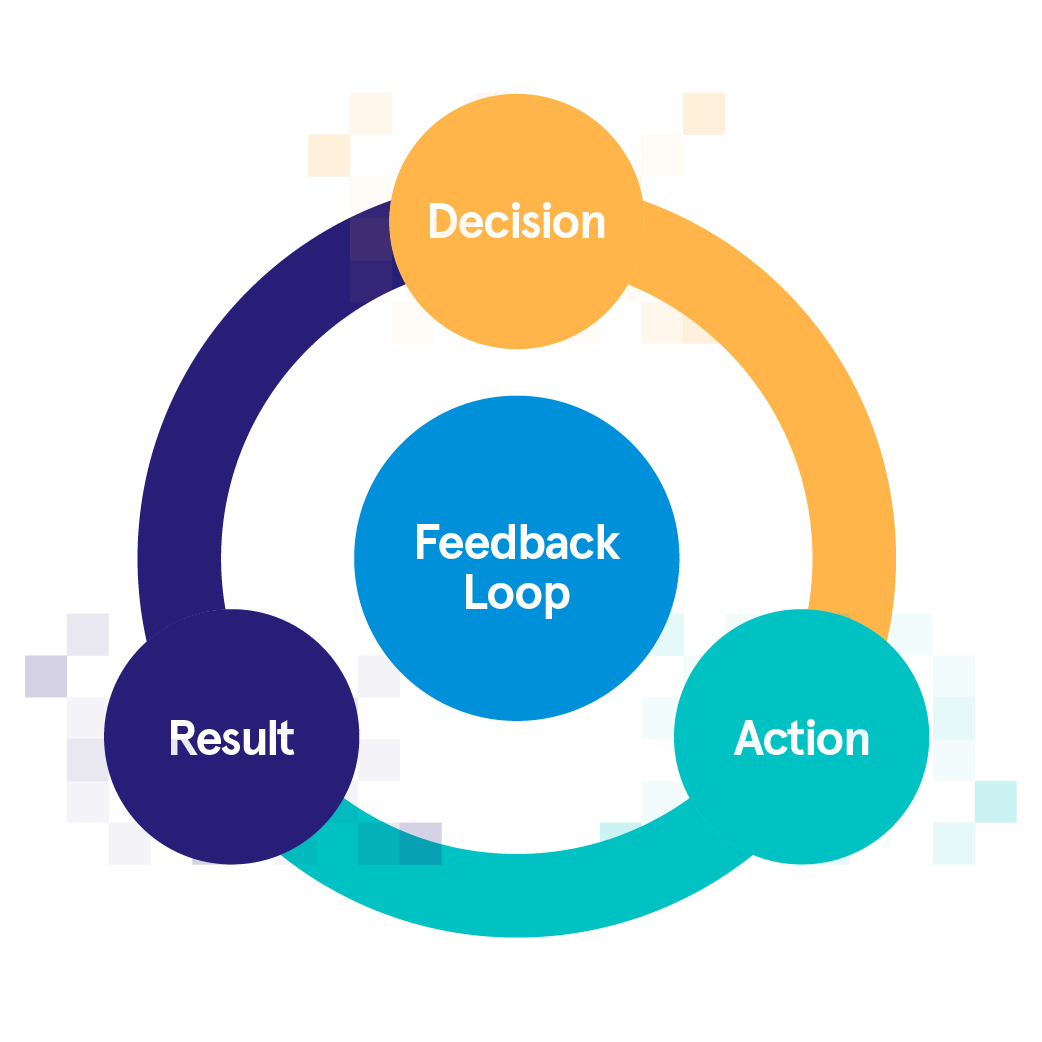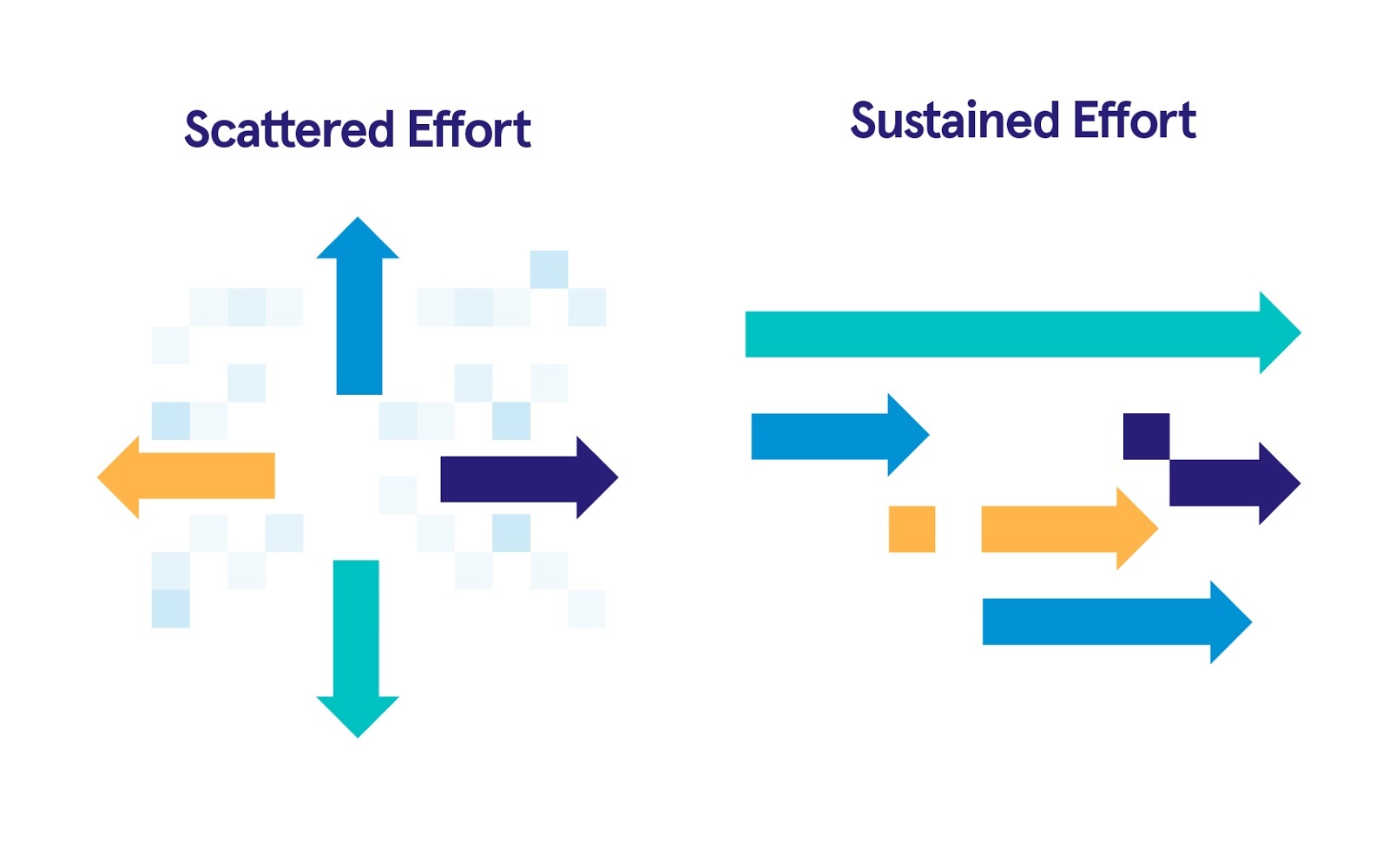Aside from a pressing need to reference the arena rock icons of my youth in the 1980s, there’s a reason this concept centers around a “journey.” It’s not the “30-Day Gym Trial of Agile Self-Improvement” or the “Really Inspiring TED Talk of Agile Self-Improvement.” It’s not just about the effort involved. It’s about embracing the idea that there’s no true end to the ongoing process of personal development. The only destination is a better you, every step of the way.
Of course, this is common knowledge to anyone who has made a bold pronouncement on January 1, only to have other priorities assert themselves by the end of the month. There’s a reason self-actualization inhabits a small triangle at the top of Maslow’s classic pyramid. It’s a busy world – who has the time?
As the Assistant Director of Technology & Development at Infotech, co-founder of the non-profit We Advance Tech Together, and mother of two, I certainly have limited windows of time to devote to self-improvement. Nonetheless, I have my goals – learning new technologies, improving my leadership skills, losing weight, etc. As I began to read numerous books on self-help and positive psychology, I noticed a clear alignment between self-improvement and software development principles. While the goals and strategies slightly differ, the core human psychology at work is nearly the same.
So I began a new approach – combining elements of agile software development and a growth mindset to meet my goals. Other developers will recognize these concepts, and hopefully, see an opportunity to apply them to their own personal and professional goals. Since no programming knowledge is required to apply these ideas to your own life, anyone can get in on the fun.
Agile Development + A Growth Mindset
The definition of agile development differs depending on who you ask. At its core are few key methodologies that revolve around developing software solutions through evolving, iterative processes and comprehensive feedback. It’s a constant journey of learning, improving, and iterating to reach a development goal. Diving into human psychology, I found the natural reflection of this to be a “growth mindset.”
A popular concept created by psychologist Dr. Carol Dweck, a growth mindset is a way of thinking that opens your mind to new challenges. Unlike the polar opposite fixed mindset, a growth mindset leaves individuals less wary of mistakes and setbacks. Similar to agile development thinking, errors are treated as information that feed into the constant cycle of improvement. By embracing a growth mindset, individuals can focus on improving skills rather than proving capabilities.
Minimum Viable Product + Gathering Feedback
One element of agile development is the Minimum Viable Product (MVP). It’s a form of prototyping design to inspire frequent feedback. The idea is simple – what are the minimum qualities your product or software must have to satisfy early adopters? Build it, release it, gather extensive feedback, and improve it. Before long, you have a product that was designed with stakeholder input. That same iterative approach of starting small, gathering feedback, and applying changes can be used to meet personal goals.
Take Greg McKeown for example – author of the New York Times Bestseller Essentialism. McKeown wanted to write a book about refining priorities down to the utmost essential, but writing a book is a large undertaking. So he didn’t start with chapters – he started with tweets. Whichever tweets gained the most traction, he expanded into blog posts. The most popular blog posts eventually made up the core of Essentialism. Before long, McKeown had MVP’d his way into a bestseller.

Backlog + Setting Priorities
In software development, a backlog is what it sounds like – a list of accumulated work. An extensive backlog can seem daunting to dev teams, so it’s often prioritized to allow the team to focus on the most important items to break down and complete next. If you’re building a social network, you’re not going to add a .GIF keyboard before you set up profiles. I like to take this backlog approach to my personal to-do list.
Everyone has a to-do list, whether it’s a haphazard collection of sticky notes on the fridge or a detailed Excel spreadsheet. Rather than quickly scrawling down your daily goals, take some time to organize and prioritize your to-do list. Breaking down large goals into bite-sized “backlog tasks” is a great way to start. Becoming AWS-certified is easy to put off, but reading AWS materials for 15 minutes is a much more accessible objective.
Automation + Forming Habits
Most dev teams seek to automate every process they can through scripts that are continuously integrated and deployed throughout the development process. Automation eliminates tasks that we view as repetitive or tedious. When you’re pursuing your personal goals, positive habit-forming is a way of automating self-improvement.
There are three elements to forming positive habits – cue, action, and reward.
Cue: A trigger that reminds you to do the action.
Action: Behavior you want to become a habit.
Reward: Positive reinforcement for your behavior.
For example, I set a habit goal of reading every morning before breakfast. I leave my Kindle on the breakfast table as my cue, take the action of reading, and reward myself with breakfast and coffee. The visual presence of my Kindle is key to forming this habit, as we’ll get into with the next topic.
UI/UX + Designing Your Environment
There are a number of UI/UX design principles that can be applied in your natural environment to help meet your goals. By using environmental nudges to simplify your choices and reduce activation energy, you can put less wasted effort into meeting your goals while remaining focused. While pursuing my weight loss goals, I found the notion of “designing for success” in Mindless Eating by Dr. Brian Wansink. Soon after, I arranged my kitchen so healthy food was at the forefront and junk food was tucked out of sight, and I found making healthy choices easier.
This table highlights how UX/UI principles can be reflected in your environment.
| Concept | UX/UI | Self-Improvement |
| Progressive Disclosure | Reduce decision fatigue by making the right choice the easy choice, like hiding “advanced options” in a print dialogue. | Removing bad choices from your environment – like hiding the television remotes so reading is the easier choice. |
| Interaction Design | Ensure visual cues draw attention to desirable actions with “call-to-action” buttons. | A visible reminder of your goals – like leaving your Kindle on the breakfast table. |
| Activation Energy | Reduce initial setup maintenance to increase motivation – like enabling use of a program while it’s still updating. | Get started quicker by planning routine maintenance – like storing a bike pump right next to your bicycle. |

Sustained Effort + Goal Alignment
There are several software development strategies that focus on eliminating waste and prioritizing goals. Mary Poppendieck and Tom Poppendieck introduced lean software development from the Japanese system of lean manufacturing, where wasted effort is minimized to increase productivity. An element of extreme programming is the “YAGNI” principle, or, “You aren’t gonna need it.” It’s a way of organizing and optimizing efforts by only focusing on what adds value. By applying this approach to your own personal goals, you embrace sustained effort versus scattered effort.

As outlined by the above image, pursuing a variety of goals at once can scatter your focus and limit progress. By assessing wasted effort and prioritizing your goals, you can progress towards multiple goals at once and reduce burnout. For example, I can read one book on communication to help me move toward my aligned goals of improved team communication and public speaking.
These strategies have enabled me to learn new skills and reach various goals, including losing weight, becoming AWS-certified, and tackling public speaking opportunities with confidence. As I continue to embrace new challenges, learn from failure, and reflect on my goals, the journey of agile self-improvement continues. I hope you find similar value in these concepts. Even taking little steps every day will quickly snowball into life-changing habits and personal growth. As Steve Perry might put it – “the wheel in the sky keeps on turning, I don’t know where I’ll be tomorrow” – so why not start today?